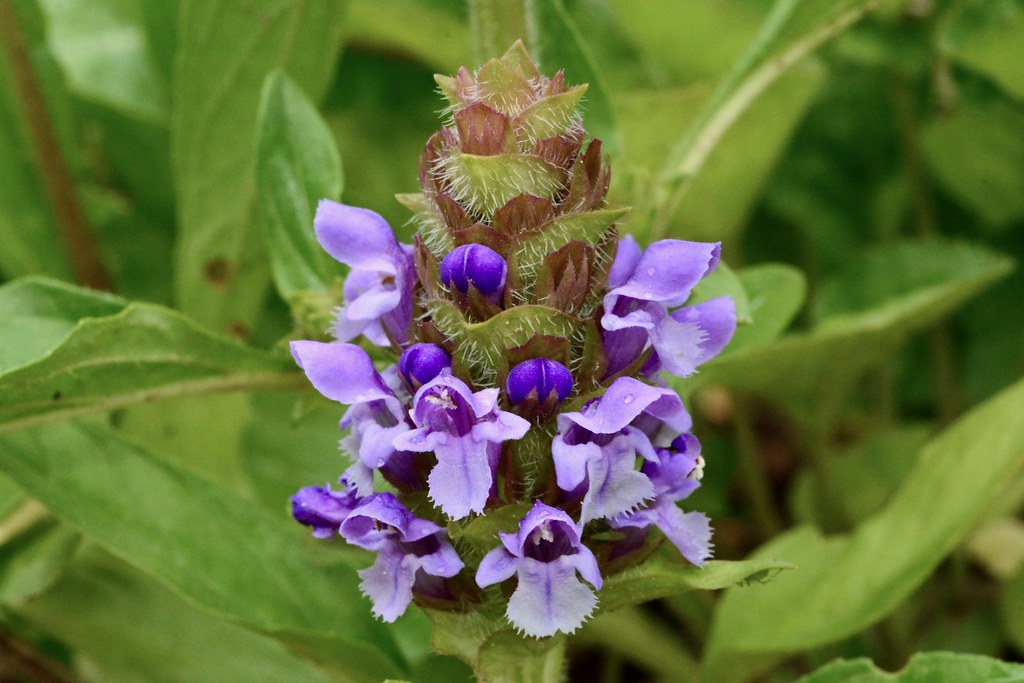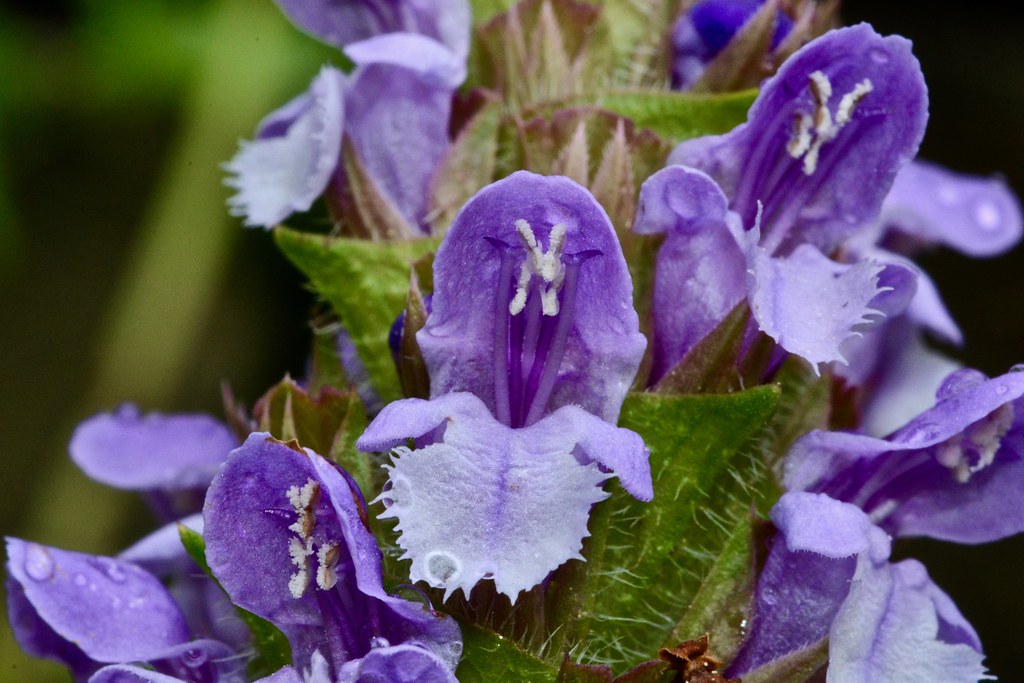June 12, 2018
A flower called Self-heal



Self-heal ~ prunella vulgaris
Self-heal (sometimes called “Heal-all”) is common and widely distributed around the world, growing at low to mid elevations. It has been traditionally used for centuries for healing both internal and external bleeding, however testing on the extracts of the plant has not shown any basis for its reputed healing ability. At least in this region it seems to have a much longer blooming season than most wildflowers.
RSS feed for comments on this post. TrackBack URI



That’s a vey attractive flower and beautifully captured.
(When it comes to wild, indigenous or herbal plants, I figure they don’t recognise the therapeutic value for humans because they test it on rats or mice – we’re human :D).
LikeLiked by 1 person
Comment by Vicki — June 12, 2018 @ 6:20 pm
There are still a lot of flowers yet to bloom here, especially at higher elevations. I’ll be hiking tomorrow to a lake at about 6,000 feet (if there isn’t too much snow on the trail) , so I’ll see what is blooming up there.
LikeLiked by 2 people
Comment by montucky — June 12, 2018 @ 7:26 pm
Are those needle-like hairs on the leaves any good at protecting the plant from herbivores?
LikeLiked by 1 person
Comment by de Wets Wild — June 12, 2018 @ 7:39 pm
No, they are soft and don’t know what their purpose is. Lots of the wildflowers around have similar hairs. I think it might have to do with controlling their temperature, but I haven’t seen anything written about them.
LikeLiked by 1 person
Comment by montucky — June 12, 2018 @ 7:48 pm
Very interesting, thanks Montucky!
LikeLiked by 1 person
Comment by de Wets Wild — June 12, 2018 @ 8:04 pm
The flowers are a little bit similar to snapdragons or orchids or miniature pitcher plants. They have that big mouth with a narrow opening.
LikeLiked by 1 person
Comment by wordsfromanneli — June 12, 2018 @ 7:57 pm
Lots of flowers use similar shapes, even some orchids. For whatever reason it’s part of a success strategy that seems to work.
LikeLiked by 1 person
Comment by montucky — June 12, 2018 @ 8:21 pm
Very attractive. Interesting that it’s been around for centuries and used for healing yet there is no basis for that. I like to think it works and it’s just one of those things science can’t explain.
LikeLiked by 1 person
Comment by Candace — June 12, 2018 @ 8:27 pm
I agree. There’s enough history of use (although there are many different things it is used for) that there must be something to it.
LikeLiked by 1 person
Comment by montucky — June 12, 2018 @ 8:46 pm
For years, people thought the plant called Boneset helped heal broken bones. As it turns out, it probably doesn’t.
LikeLiked by 1 person
Comment by Malcolm R. Campbell — June 12, 2018 @ 10:36 pm
I sense that there is more to the traditions about Self-heal, although I have not experimented with it myself. It does contain a long list of compounds.
LikeLiked by 1 person
Comment by montucky — June 13, 2018 @ 4:04 pm
It blooms for quite a long time here as well, but I haven’t seen it yet.
You got some fantastic shots of it! I think the flowers look like mini orchids.
LikeLiked by 1 person
Comment by New Hampshire Garden Solutions — June 13, 2018 @ 4:01 pm
They do! I don’t think a lot of people really get a good look at them because they are so close to the ground.
LikeLiked by 1 person
Comment by montucky — June 13, 2018 @ 4:08 pm
Very nice! Beautiful images! Thanks for sharing them with us!
LikeLiked by 1 person
Comment by Reed Andariese — June 14, 2018 @ 12:54 am
Thanks Reed.
LikeLike
Comment by montucky — June 14, 2018 @ 7:08 am
I’m trying to finish a post that includes a link back to this one about self-heal, another flower I found on my travels. One thing I did find while trying to figure out if “my” self-heal was the same as yours was this post from the Arkansas Native Plant Society. It’s just remarkable — enough so that I followed the blog immediately. I’ve never seen such a complete post on a plant, including the “exploded” view that’s offered. I saw several plants names I recognized in the sidebar, including serviceberry. It occurs to me that the higher elevations in the Arkansas mountains might allow for a number of plants shared between your states.
LikeLiked by 1 person
Comment by shoreacres — June 15, 2018 @ 6:56 am
Thanks for that link! That’s an incredibly detailed and complete description of the plant. Makes me almost want to be in Arkansas! I sure wish I could find studies like that for other plants!
Incidentally, I finally ran across a description and analysis of the hairs that are found on so many of the wildflowers. They are called “trichomes” and there is a fascinating explanation of them on Wikipedia here.
LikeLike
Comment by montucky — June 15, 2018 @ 8:27 am
I had a look at that link too .. very informative. Great image as always
LikeLiked by 1 person
Comment by Julie@frogpondfarm — June 16, 2018 @ 10:01 pm
Thanks Julie!
LikeLiked by 1 person
Comment by montucky — June 17, 2018 @ 8:12 am
Interesting background story of this beauty. Thank You.
LikeLiked by 1 person
Comment by Sartenada — June 19, 2018 @ 12:58 am
I wish I could get good information on many other wildflowers too!
LikeLike
Comment by montucky — June 19, 2018 @ 7:12 pm
http://Www.jinshinet.com
A flower called Self-heal | Montana Outdoors
LikeLike
Trackback by Bmw egypt map — August 11, 2018 @ 10:10 am
[…] via A flower called Self-heal — Montana Outdoors […]
LikeLike
Pingback by A flower called Self-heal — Montana Outdoors – SEO — August 23, 2018 @ 12:35 am